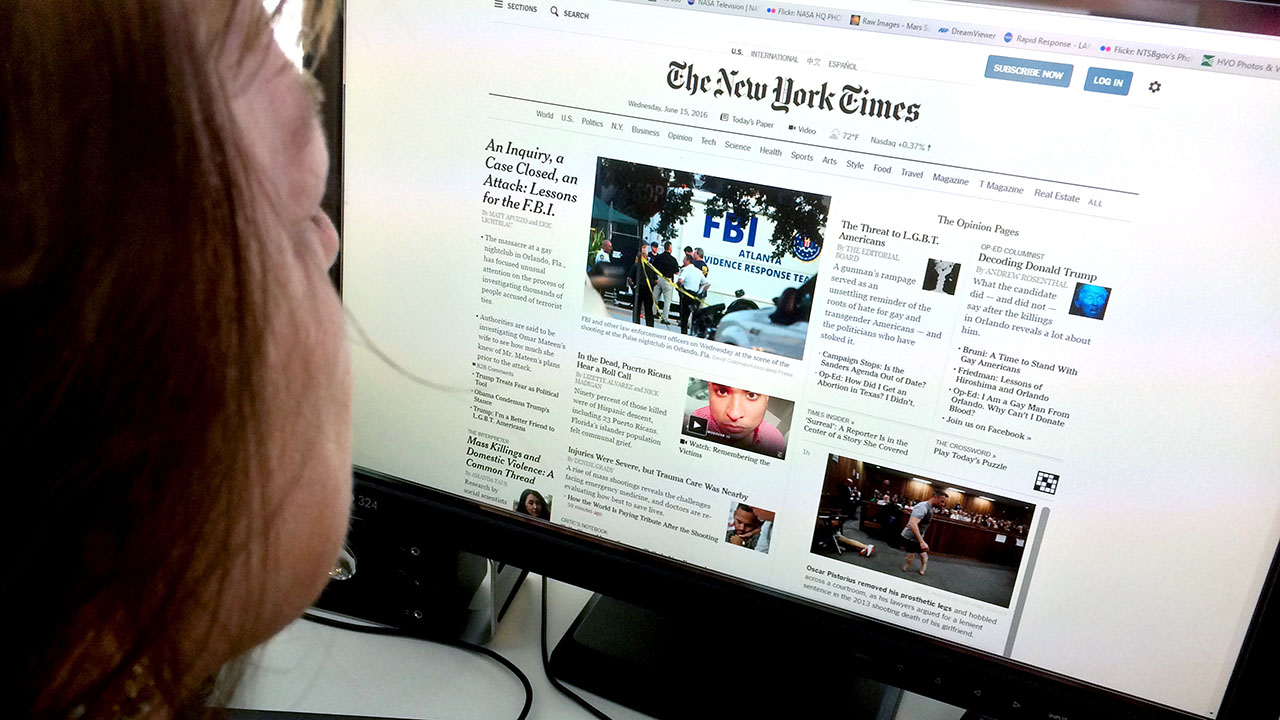4 Simple Techniques For News Channels
4 Simple Techniques For News Channels
Blog Article
The Buzz on News Channels
Table of ContentsSome Known Factual Statements About News Channels Things about News ChannelsFascination About News ChannelsThe 8-Second Trick For News Channels
The premier programs will certainly frequently air at night throughout "prime-time show", however there are also early morning newscasts of 2 to 3 hours in size. Moving information networks relayed news content 24 hours a day. The advent of the web has actually permitted the regular 24-hour-a-day presentation of numerous video and audio news records, which are upgraded when additional information ends up being readily available; many tv broadcasters provide material originally offered on-air as well as unique or auxiliary information material on their sites.Terminals that make use of a "wheel" layout often tend to keep to an established routine of specific shows at particular specific minutes on the hour, and among these segments is often an information bulletin. These short bulletins will offer introductions of any damaging information of rate of interest, and might consist of neighborhood concerns such as weather condition forecasts or website traffic records.

News broadcasts in the USA were originally sent over the radio. NBC started programs in November 1926, with CBS getting in manufacturing on September 25, 1927. Both originally talked about similar topics, such as election outcomes, presidential commencements, and other issues of worry to the public. NBC quickly arised as the leading force for entertainment skill.
A Biased View of News Channels
A general change gradually occurred in the style of the evening broadcasts in the majority of nations. In the 1950s, television was unique sufficient that it was considered enjoyment. In the 1960s and 70s, tv newscasts tended to be unusually "significant" by later on criteria, including even more "tough information" and less light entertainment blended in.

From 2000 to 2010, general viewership of television program news index proceeded to decrease. Some news-adjacent cable television programs gained fame and success in this period (such as the comedy-focused and the commentary-focused ). Their gains did not balance out the proceeding high decline in viewership of mainline network news.
The Single Strategy To Use For News Channels
The National, which has actually broadcast on CBC Television since 1954, is the longest-running nationwide network broadcast in copyright.: CBC's (aired given that 1975), Global's (aired because 2008), and CTV's (aired given that 1966 and presently the longest-running network newsmagazine in copyright). CTV's is the single nationwide morning information program on program tv in copyright, and changed, which broadcast given that 1975.
Local television stations in the United States typically transmitted local news three to top article 4 times a day generally: typically airing at 4:30, 5:00, 5:30, or 6:00 a.m (News Channels).; midday; 5:00 and 6:00 p.m. in the early evening; and 10:00 or 11:00 p.m. Some terminals carry early morning broadcasts at 4:00, 7:00, 8:00, or 9:00 a.m., midday broadcasts at 11:00 or 11:30 a.m., late mid-day broadcasts at 4:00 or 4:30 p.m., or very early evening broadcasts at 5:00 or 6:00 p.m
in the Eastern and Pacific time areas or 9:00 p.m. in the Hill and Central time areas in the united state). Stations that create neighborhood broadcasts commonly broadcast just one to as much over twelve hours of regional news on weekdays and as low as one hour to as much as 7 hours on weekends; information programs on weekends are commonly limited to early morning and night broadcasts as the variable organizing of network sporting activities shows (if a terminal is affiliated with a network with a sporting activities division) generally stops most stations from carrying lunchtime broadcasts (however a couple of terminals found in the Eastern and Pacific time zones do generate weekend break midday broadcasts). [] From the 1940s to the 1960s, broadcast tv stations commonly supplied regional news programs just one to 2 times each evening for 15 minutes (the regular size for several locally generated programs at visit here the time); usually these programs aired as supplements to network-supplied evening information programs or leadouts for primetime programs.
An Unbiased View of News Channels
Information share contracts are most usual with stations co-owned. News Channels with a bigger network affiliate or whose operations are collectively taken care of through a shared service or regional marketing agreement. In situations where a terminal with an existing information department participates in a news share contract, it will result either the two departments combining or the outright conversion of newscast manufacturing from internal to outsourced production.
These names are planned to establish one station apart from the rest, particularly for visitors who are picked for target market dimension surveys. If the participant was not able to provide a channel number or call letters, the broadcast title is usually sufficient for the proper station to get Nielsen ratings credit. [] The Big 3 program television networks generate morning and evening national newscasts.
Report this page